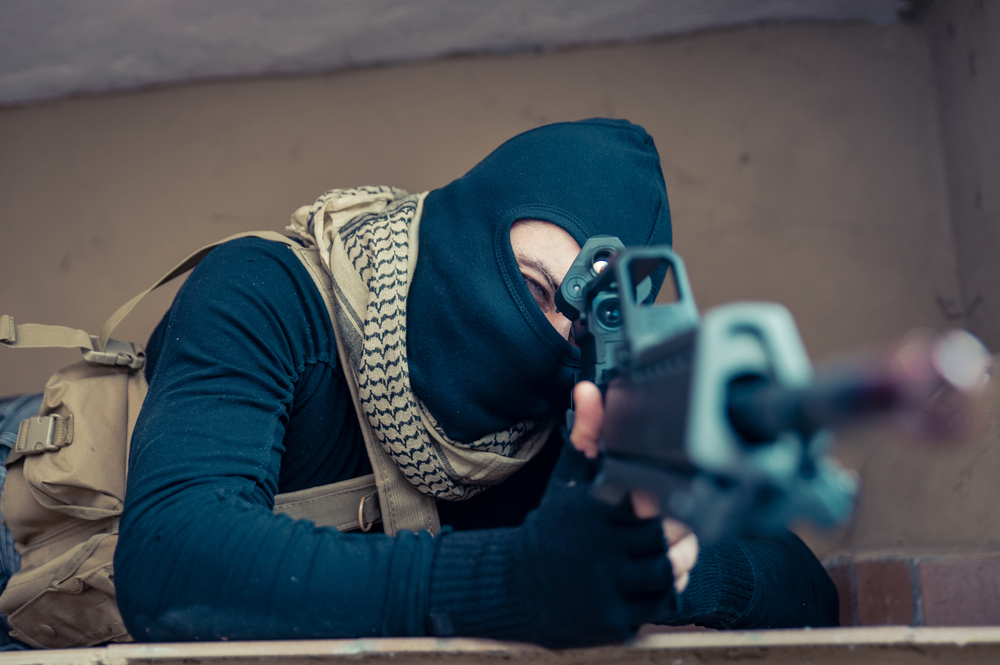ISIS appears to be seeking new areas of influence in Southeast Asia to compensate for its string of losses in Syria and Iraq. The terror group’s bid is evidenced in the ongoing confrontation between the Philippines regular army and extremist Mauti group, believed to be linked to ISIS militants operating in Marwai City, in Mindanao, the second largest and southernmost major island in the Philippines, where the group has seized control of some districts since May 23, 2017.
The government forces are facing several hardships in confrontations with these elements. For one, armed hostilities are taking place in civilian-populated areas. Another is that the Mauti group led by Omarkhayam Romato Maute is receiving support from some sympathizers, according to media reports.
The current confrontations in Marawi do raise questions about reasons behind ISIS’ recent escalation of attacks in Southern Philippines at this time, especially because the battle for Marawi is ISIS' first direct confrontation with the Philippines army. In the past, the group prioritized terrorist attacks and refrained from direct engagement with government forces.
Multiple Factors
The current rise in ISIS’ activity in the Philippines is driven by several factors the most prominent of which is that more elements of local terror organizations are joining ISIS. Some of these organizations even declared allegiance to other groups such as Abu Sayyaf and the Mauti group which was established in 2012 and carried out several terrorist attacks including a bombing in Davao City in September 2016 that killed 14 people.
Several reports indicate that ISIS militants are deployed in the streets of Mindanao, an island riddled with high poverty rates, poor infrastructure and social services as well as absence of the rule of law that is coupled with thriving illicit drug trade, with the latter being a source of funding for terrorist organizations over the past period.
Evidently, ISIS wanted to ensure that it does not have to rely solely on locals sympathizing with its goals and ideology to establish terrorist hotbeds in targeted areas. That is why it deployed foreign experienced and battle-hardened fighters who came from areas under its control in Syria and Iraq.
Various Goals
ISIS appears to be attempting to achieve several goals through its expansion in some areas in southern Philippines. The following stand out among these goals:
1- Creating local terrorist hotbeds or centers. It seeks to spread its extremist ideology as ISIS carefully selects areas that are under weak security control, with rough terrain and riddled with sectarian or communal unrest. That is why Mindanao Island is of special importance for the group. That is, ISIS appears to be planning to transform it into a new stronghold where it can seek refuge in the coming period, given, in particular, strong pressures it is undergoing in areas already under its control, as the battle for Mosul is drawing to a close while another battle for Raqqa, its de facto capital and main stronghold, is already heating up.
2- Recruiting new elements. Through expanding into these areas, the terror group is, perhaps, seeking to recruit new elements in the coming period. The quest is driven by the heavy human losses it had suffered in several simultaneous military confrontations. The targeted areas are densely-populated and home to extremist organizations and suffer high poverty rates.
Moreover, these areas can serve as potential springboards for the group’s terrorist attacks on targets in neighboring countries, given, in particular, increasing warnings that leveraged influence for ISIS in these areas could help recruit extremist elements from the Philippines’ neighbors. Newly-recruited militants could, according to such views, attempt to carry out terrorist attacks in these countries at a later stage.
Without a doubt, such warnings have become more significant after some Asian terrorists that joined ISIS in Syria and Iraq sent a message to extremists in those Asian countries urging them not to head for the the group’s main strongholds in the Middle East and to focus, instead, on fighting the Philippines government.
These concerns were clearly voiced by Singapore Prime Minister Lee Hsien Loong. In statements made on June 11, 2017 Loong referred to ISIS saying, “The Middle East seems a long way away but it is not. This is a problem which is amidst us.”
3- Spreading ISIS ideology. The rise of some extremist organizations in Southeast Asia over the past period paved the way for ISIS to spread its ideology and views. More specifically, this enabled the group to recruit a large number of extremists from these organizations that later took part in ISIS’ own operations in Syria and Iraq after declaring allegiance.
4- Compensating for waning influence. Through its attempt to expand influence in the Philippines, ISIS appears to be seeking to compensate for its diminishing influence in its main strongholds in Syria and Iraq, and prove that it is capable of expanding and spreading despite pressures imposed by military hostilities against its forces in the two Middle Eastern countries. This may support its efforts to maintain its internal cohesion while reducing the possibility that some of its elements and militants would defect to join other terrorist organizations.
Hence, it is perhaps possible to explain why this region and the entire world is following with interest the ongoing confrontations between ISIS and the Philippines government army where the outcome will, along with other factors, determine the group’s ability to establish new global terrorist centers.


